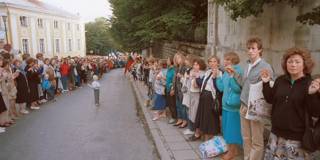Thirty years ago this month, a series of peaceful demonstrations in Eastern Europe set off a chain of events that culminated in the collapse of the Soviet Union. Looking back, it is now clear that Europe experienced a miracle in 1989: the story could have had a much darker and bloodier ending.
STOCKHOLM – This month marks 30 years since Europe – and human civilization generally – began to undergo a miraculous transformation that is now etched in the world’s memory. By the summer of 1989, the Soviet Union was already in terminal decline. The only question was whether communism would disintegrate peacefully, or amid an explosion of violence and devastation.

STOCKHOLM – This month marks 30 years since Europe – and human civilization generally – began to undergo a miraculous transformation that is now etched in the world’s memory. By the summer of 1989, the Soviet Union was already in terminal decline. The only question was whether communism would disintegrate peacefully, or amid an explosion of violence and devastation.